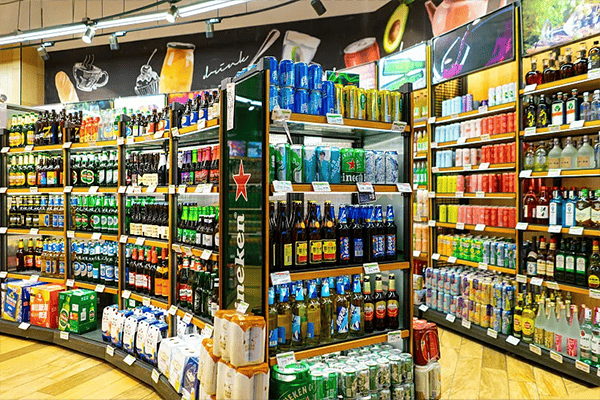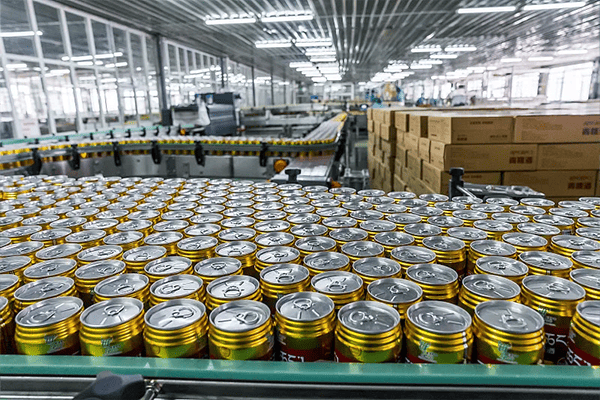1. Juice Can Filling Machines: A Complete Guide
A juice can filling machine is automated equipment that precisely fills cans with juice and seals them for retail. It handles the entire process—filling, sealing, capping, and conveying—ensuring hygiene, speed, and portion consistency. Ideal for high-volume production, it supports juices of varying viscosities (e.g., pulpy, clear, or concentrated).

2. Key Components of a Juice Can Filling Machine
A modern juice can filling line integrates these critical parts:
-
Filling Station: Uses volumetric pistons or flow meters for exact juice dispensing.
-
Sealing System: Applies airtight seals to preserve freshness.
-
Capping Unit: Secures lids (e.g., pull-tabs) onto filled cans.
-
Conveyor Belt: Automates can movement between stations.
-
Control Panel: Touchscreen interface for adjusting speed, volume, and diagnostics.
3. How Does a Juice Can Filling Machine Work?
The process operates in 4 automated stages:
-
Feeding: Empty cans enter via conveyor.
-
Filling: Juice is dispensed into cans at preset volumes (e.g., 250ml ±1%).
-
Sealing & Capping: Cans are sealed and lidded under food-grade conditions.
-
Exit: Finished cans move to labeling/packaging stations.
Output: Up to 24,000 cans/hour in industrial setups.
4. Advantages of Using a Juice Can Filling Machine
-
Precision: ±0.5% filling accuracy reduces product waste.
-
Speed: 3–5× faster than manual filling.
-
Versatility: Handles diverse can sizes (200ml–1L) and juice types (pulpy/carbonated).
-
Shelf Life: Airtight seals extend freshness by 6–12 months.
-
Cost-Efficiency: ROI in 6–18 months via labor/material savings.
5. Key Selection Factors
When choosing a juice can filling line, prioritize:
-
Juice Properties: Pulp content/viscosity dictate nozzle type.
-
Output Needs: Machines range 2,000–50,000 cans/hour.
-
Can Compatibility: Verify diameter/height tolerances.
-
Hygiene: Opt for stainless steel + CIP (Clean-in-Place) systems.
-
Integration: Ensure compatibility with existing packaging lines.

6. Maintenance & Troubleshooting
Routine Care:
-
Daily: Clean nozzles/seals; inspect sensors.
-
Monthly: Lubricate moving parts; calibrate fill volumes.
Common Issues: -
Underfilling: Clean clogged valves/replace worn pistons.
-
Faulty Seals: Adjust pressure settings or sealant temperature.
-
Conveyor Jams: Realign guides; check motor drives.
7. Comparison with Other Technologies
| Packaging Type | Speed | Durability | Shelf Life |
|---|---|---|---|
| Can Filling Line | ★★★★☆ | ★★★★★ | 12–24 months |
| Bottles | ★★★☆☆ | ★★☆☆☆ | 6–12 months |
| Cartons | ★★☆☆☆ | ★☆☆☆☆ | 3–6 months |
| Key Advantages of Cans: |
-
Superior light/oxygen barrier vs. bottles/cartons.
-
Higher compression strength (ideal for shipping).
-
Faster filling speeds due to rigid structure.
Product parameters:
| Technical parameter :Fully Automatic Flowmeter type Can Filler/Seamer for CSD | |||||
| Model | GDF12-1 | GDF18-4 | GDF32-6 | GDF40-6 | GDF60-6 |
| Capacity(cans/hour) | 2000 | 8000 | 15000 | 20000 | 30000 |
| Suitable container | Aluminum Can / Tin Can / Plastic Can | ||||
| Can diameter | Dia40 ~ dia99mm | ||||
| Can height (mm) | 65-175mm | ||||
| Compressor air | Isobaric filling / normal pressure filling | ||||
| Application | Can Juice Filling Machine | ||||
| Total power (kw) | 2.5kw | 4.5kw | 6.5kw | 7.4kw | 15kw |
| Overall dimensions | 2.5*1.9m | 2.8*1.9m | 3.2*2.5m | 3.8*2.8m | 3.8*2.8m |
| Height | 2.3m | 2.5m | 2.5m | 2.5m | 2.5m |
| Weight(kg) | 2500kg | 3200kg | 4500kg | 6500kg | 10000kg |
If you have any questions about beverage packaging machinery, you can contact us and we will provide you with the most effective solutions and the answers you want.https://sokosfillingmachine.com/contact-us/

